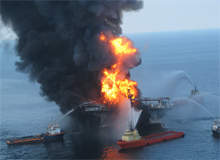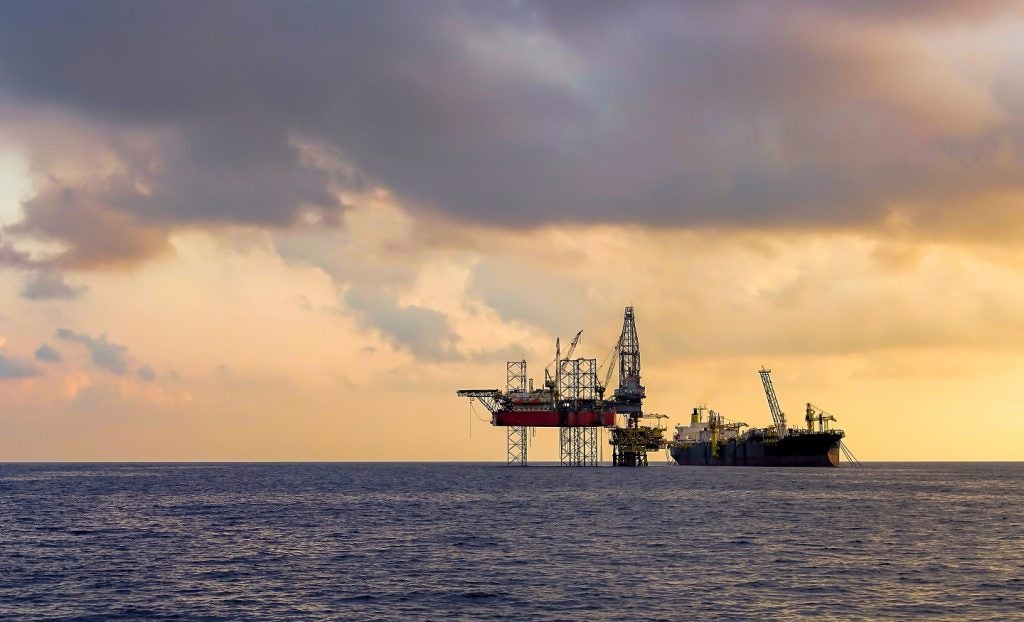
The much maligned Deepwater Horizon project in the Gulf took place in deepwater, and for good reason – shallow water production in the area has all but run dry.
Most of the producing assets in shallow waters of the Gulf of Mexico (GOM) offshore are past their peak production and have been witnessing a steep fall in production during the last 15 years.
The share of shallow water production in the total GOM production decreased from 67% in 2000 to 35% in 2009 and is expected to tail off at an average annual rate of 13.8% through to 2018.
Production has declined from 917.6 million barrels of oil equivalent (mmboe) in 2000 to 347.8 mmboe in 2009, registering an average annual decline rate of 10.8% during the period 2000–2009.
Crude oil production declined at an average annual rate of 8.2% and natural gas declined at a rate of 11.8% during the same period.
See Also:
Despite a few small discoveries, hope is fading, and according to market data from leading analysts Global Data, very few discoveries in the shallow waters of GOM offshore are likely to offset the fall.
How well do you really know your competitors?
Access the most comprehensive Company Profiles on the market, powered by GlobalData. Save hours of research. Gain competitive edge.

Thank you!
Your download email will arrive shortly
Not ready to buy yet? Download a free sample
We are confident about the unique quality of our Company Profiles. However, we want you to make the most beneficial decision for your business, so we offer a free sample that you can download by submitting the below form
By GlobalDataSluggish exploration activity
The shallow water region experienced muted investment in lease sales between 2009 and 2010. Historical lease sales from 1992 to 2009 indicate that the exploration activities are shifting focus from shallow waters to deepwater areas in the GOM.
Shallow waters have, however, seen a steady increase in percentage contribution to investments in the lease sales of 208, 210 and 213, but the investments in the three lease sales were less than 10% of the total investments in GOM offshore during 2009 and 2010.
The central GOM lease sale 213 held in March 2010 attracted a total investment of $950m, out of which $101m was in shallow water, lease sale 210 held in August 2009 attracted a total investment of $115m, of which the shallow water region was able to attract $10m.
In the central GOM lease sale 208 held in March 2009 shallow water attracted a total investment of $45m, representing a percentage share of 6.4% of the total lease sale investment.
And the trend is expected to continue, despite stricter regulations and project delays post-BP oil spill, the deep waters of GOM offshore will continue to attract the greater share of investment.
International oil company pull out
International oil companies (IOCs), which dominated the total oil and gas production in shallow waters of GOM offshore over the last decade, have been experiencing a sharp fall in production.
IOCs that contributed 52% to the total shallow water oil and gas production in 2000 witnessed a fall of 4% by 2009. The production by independent companies also fell during the period.
However, their contribution to the total oil and gas production in the region increased in 2009, accounting for a 52% share in the total oil and gas production in 2009.
The reversal in the contribution in total production in shallow water is attributed to a higher annual decline rate of IOCs compared to independent oil companies.
The annual decline in oil and gas production for independent companies was 9.7% compared to 11.8% of annual fall of production of IOCs during the period 2000–2009.
New discoveries head for deepwater
Fiscal incentives such as the Deepwater Royalty Relief Act (DWRRA) and advances in deepwater drilling and seismic imaging in the last two decades have generated major interest in deepwater exploration activities.
During the period 2000–2010, the deepwater areas of GOM offshore reported a number of significant oil and gas discoveries. While the GOM shallow water reported eight discoveries, the deepwater areas reported 34 discoveries.
Moreover, the deepwater areas of the GOM offshore have reported larger discovery sizes than those of the shallow waters. As a result, the deep waters in the recent lease sales 208, 210 and 213 have attracted more than 90% of the investment, totalling to $1.6bn.
The only major discovery announced in the GOM shallow water is the Davy Jones gas discovery in early 2010 by McMoRan Exploration Company. The discovery is estimated to have 2-6 trillion cubic feet (tcf) of natural gas reserves.
Despite the doom and gloom for shallow water, some major players are still holding out hope that the discovery may boost exploration for deep natural gas in the shallow water region and attract fresh investments to this relatively unexplored prospect.
Independents commitment wavering
With most of the producing assets of GOM shallow waters past their peak and declining, the IOCs have been shifting their focus to more prolific deepwater in the GOM.
Large discoveries in deepwater during the period 2008–2010 have, however, increased the attractiveness of deepwater. IOCs with a greater appetite for risk, a technological edge and the necessary financial prowess have been making investments in the deepwater of the GOM offshore and exiting from their shallow water assets.
IOCs such as Royal Dutch Shell and ExxonMobil Corporation have recently sold some of their shallow water properties to independent oil companies such as W&T VI, LLC and Energy XXI.
Such deals allow IOCs to sell off their mature assets in shallow waters and channel the investments into deepwater projects.
Capital constrained independent oil companies buy these assets to increase their asset portfolios and create additional recompletion and drilling opportunities in the shallow water of the GOM.
This has resulted in independent oil companies accounting for 52% of the total production in the shallow waters of the GOM offshore and they continue to strengthen their presence there.
IOCs on the other hand have dominated production from the deepwater of the GOM offshore, a trend which is likely to continue in the coming years.
More details on the full GlobalData report.
GlobalData is an industry analysis specialist company providing business information products and services. Its highly qualified team of analysts, researchers, and solution consultants use proprietary data sources, and various tools and techniques to gather, analyse and represent the latest and the most reliable information essential for businesses to sustain a competitive edge.




